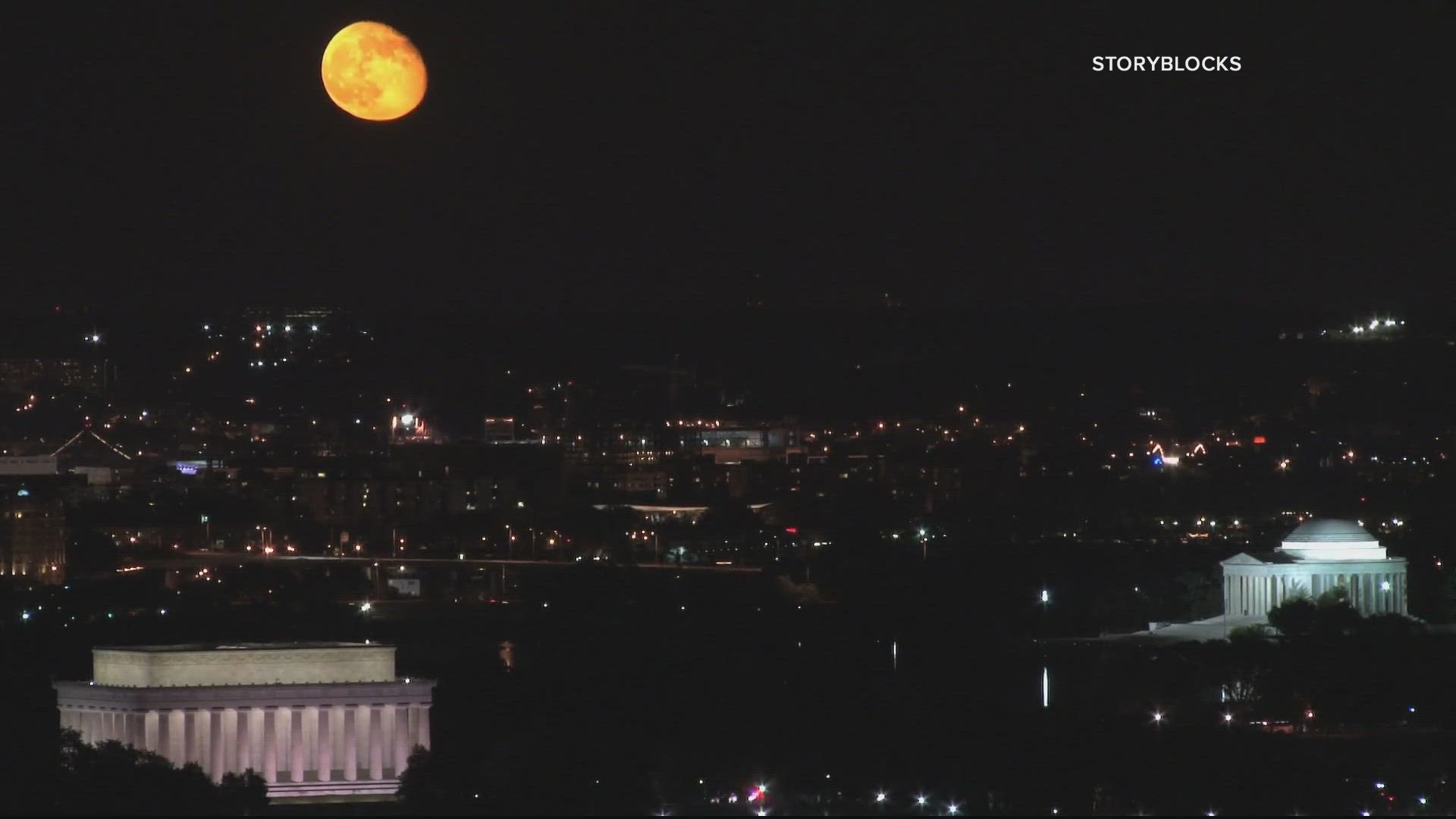WASHINGTON D.C., DC — Hurricane Idalia caused damage across Florida and Georgia Wednesday morning, then continued to deliver heavy rain and strong winds to South Carolina after it was downgraded to a tropical storm.
At the same time, sky watchers around the country got to see a rare, blue supermoon. Not often does the second full moon of a calendar month happen when the moon is also at the closest point to Earth of its orbit.
But were they connected?
QUESTION
Did the blue supermoon increase Idalia's storm surge?
SOURCES
ANSWER
Yes, the blue supermoon contributed to the storm surge created by Idalia.
WHAT WE FOUND
The blue supermoon increased Idalia's storm surge because of the two characteristics that make it special.
Tides are caused by the gravitational pull of the moon as it rotates around the Earth. Its orbit is oval-shaped, so its' phases bring it either closer to Earth or farther away. The closer the moon gets, the greater the impact of its gravitational pull. High tides become higher, and low tides becomes lower.
According to NASA, the moon became full Wednesday evening. Wednesday was also the day the moon came closest to the Earth in its current orbit. That creates a perigean spring tide, which is the strongest a tide can get.
The National Ocean Service says tides average one foot higher during a perigean spring tide than during an apogean spring tide, which happens when a full or new moon occurs during the farthest point of its orbit.
The National Weather Service office in Charleston, South Carolina advised, between Idalia and the expected high tide, Charleston could get as much as four feet of storm surge because of Idalia.

